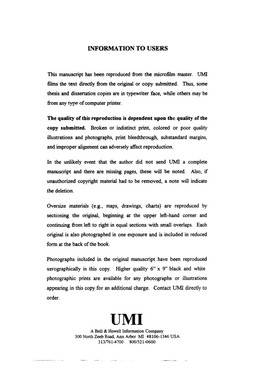| dc.contributor.advisor | Scamehorn, John F., | en_US |
| dc.contributor.author | Fillipi, Bita. | en_US |
| dc.date.accessioned | 2013-08-16T12:29:47Z | |
| dc.date.available | 2013-08-16T12:29:47Z | |
| dc.date.issued | 1997 | en_US |
| dc.identifier.uri | https://hdl.handle.net/11244/5498 | |
| dc.description.abstract | The effectiveness of micellar-enhanced ultrafiltration (MEUF) and ligand-modified micellar-enhanced ultrafiltration (LM-MEUF) techniques for removal of heavy metal ions and/or organic pollutants from aqueous streams are studied. In MEUF metal ions bind to the surface of negatively charged micelles of an anionic surfactant while organic solutes dissolve inside the micelles. In LM-MEUF a surfactant and a ligand are added to a solution containing ions of like charge. The ligand complexes with the target ion of interest and incorporates inside the micelles. In both processes the mixture is passed through an ultrafiltration membrane with pore sizes small enough to reject the micelles and their associated ions or solubilized organics. In Chapter 1 the technical feasibility of LM-MEUF process for selective removal of copper from an aqueous solution using a commercial ligand in a cationic surfactant is investigated. The effect of pH, and the concentrations of copper, calcium, surfactant, and the ligand on the efficiency of copper removal are reported. A novel surfactant/ligand regeneration scheme is also introduced in this Chapter. Chapter 2 evaluates the economic feasibility of LM-MEUF based on the experimental results in Chapter 1. This Chapter includes a sensitivity analysis for several operating scenarios to determine the most favorable operating conditions. A comparative cost estimate is performed to assess the economic viability of LM-MEUF copper extraction process compared to the conventional copper extraction process. In Chapter 3 the advantages of addition of small concentrations of nonionic surfactant to an anionic surfactant in MEUF system is discussed. The resulting anionic-nonionic mixture exhibits negative deviation from ideality of mixing which results in a larger fraction of the surfactant being present in micellar form. The contribution of concentration polarization and membrane charge to solute rejection is also studied; comparison of experimental solute rejections to those predicted by equilibrium models support the presence of these mechanisms. | en_US |
| dc.format.extent | xv, 152 leaves : | en_US |
| dc.subject | Surface active agents. | en_US |
| dc.subject | Micelles. | en_US |
| dc.subject | Engineering, Chemical. | en_US |
| dc.subject | Ultrafiltration. | en_US |
| dc.subject | Separation (Technology) | en_US |
| dc.title | Use of micellar-enhanced ultrafiltration and ligand-modified micellar-enhanced ultrafiltration processes to remove dissolved metals and organic solutes from aqueous streams. | en_US |
| dc.type | Thesis | en_US |
| dc.thesis.degree | Ph.D. | en_US |
| dc.thesis.degreeDiscipline | School of Chemical, Biological and Materials Engineering | en_US |
| dc.note | Major Professor: John F. Scamehorn. | en_US |
| dc.note | Source: Dissertation Abstracts International, Volume: 58-03, Section: B, page: 1402. | en_US |
| ou.identifier | (UMI)AAI9728718 | en_US |
| ou.group | College of Engineering::School of Chemical, Biological and Materials Engineering | |
